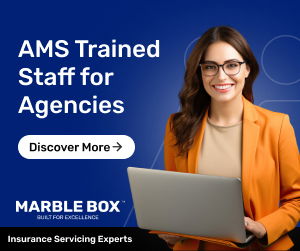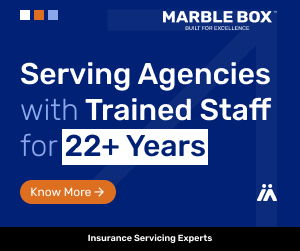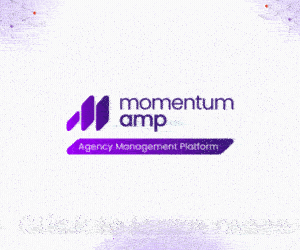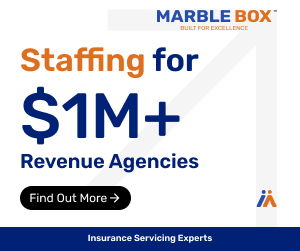Getting a carrier appointment for a new independent agency is not easy. Carriers want to see an existing book of business or a commitment to a certain premium volume within a certain time frame. Hence, the option for startup agencies is to be a part of some sort of an agency network. If you want to be completely independent, this will not work to your advantage, because you are limiting your ability to represent several carriers as well as the more well-known carriers. Even agencies with premium volumes of more than 10 million dollars are often part of a network, because it impacts them in a positive way, including having more carrier appointments and being able to get profit sharing earnings by being part of a larger group. However, if you still want to go at it on your own, there may be options, which will probably be similar to the options available to a captive agency, though you may be able to grow out of that situation if you are able to grow your agency significantly.
Get Additional Resources To Help You
Successfully Start Your Insurance Agency!
Most will want to see your business plan and your previous loss ratios, especially if they are well documented (such as with captive agencies). Your loss ratio numbers need to look good to make the cut. You should also include 5-year projections along with production goals. Consider approaching regional carriers, as it will probably be difficult to get an appointment with a national carrier. Because these carriers will want to see good volume from you, it is recommended that you get only one or two preferred appointments at startup, since you will need to meet the carrier production requirements. Some may have programs for startup agencies, but this is not very common. Because of these limitations, it’s best to read the next section on Insurance Agency Networks, as this is truly the best way to secure a portfolio of carrier appointments.
Insurance Agency Network Groups
There are all types of agency networks across the U.S. and even a few worldwide. Many of these groups refer to themselves as “clusters”, but there are also franchises, alliances, and other types of aggregators. Regardless of what they call themselves, they are basically master agencies; that is, a group of retail agencies under a master agency. Most carriers now recognize these organizations and give subcodes to their member agencies. More often than not, a subcode shows the member agency name, not the master agency name, on the declaration page of their agency’s policies. For the few carriers that don’t subcode, the policies will show the master agency name, though this is not the norm. Having a subcode, as far as the client is concerned, is as good as having your own code, most especially since your agency name is listed on the declaration page.
Most of these organizations are open to admitting startup agencies, though some may restrict membership to those who operate an existing agency. Some have minimum requirements to join and require only established agencies with a minimum premium volume, while others have programs for startup agencies. Many of these groups have an initiation fee to join, often several thousand dollars or more. Monthly fees can vary too from a percentage of commissions to a fixed monthly fee or a combination of both. Typically, a prospective member completes an application process that is then reviewed by the decision-makers of the organization. You may need to submit a business plan or an agency profile report along with the application. Some groups may require previous loss ratios; the last thing these groups want is an agency with a history of high loss ratios. If you have had some great loss ratios as a captive agency, you should include this information, as it can only help your case and demonstrate that you are a good underwriter.
Being in some type of aggregator is essential for the small to mid-size agency in the current marketplace. In most cases, an aggregator will provide you with all the carriers you need. These groups will negotiate with these carriers, and, in most cases, they distribute profit sharing back to their members. Speaking of profit-sharing, it’s very difficult for a smaller agency to meet the minimum requirements to qualify for profit sharing. Master agencies allow a group of smaller agencies to combine their volumes. Most of these organizations claim a certain percentage of the profit-sharing and often return a higher percentage of the share back to their members based on a certain formula.
How do you choose which is the best organization for you? The first step is to visit the websites of those operating in the state in which you are operating. You can find a list of these organizations and the states they operate under the Agency Clusters | Alliances| Networks | Franchises | Aggregators directory here on AgencyEquity.
No two organizations are alike. While they mostly provide markets, they may differ in a number of ways. Profit sharing agreements and contracts vary from group to group. Some groups may include things like E&O Insurance and an agency management system, while others may just provide markets and profit sharing. Some groups may provide you with something in between these options, and some groups may give you a choice. You should review a group’s carrier appointments and determine if those carriers serve the markets you are looking to target. One size does not fit all, and you will have a choice depending on your needs and your available startup capital.
Review each group’s website to learn as much as you can about them. Find out what their requirements are and if you meet their criteria. In addition to finding out what carriers they represent, find out about their services and then compare your needs with what each group has to offer. Ask yourself which carrier mix and contract terms will be better for your agency and check if they are accepting new agencies. Groups that offer more are going to likely have higher fees, however keep in mind, you get what you pay for. If a group doesn’t offer things like E&O coverage, you still need to purchase it on your own.
Once you find a compatible group, contact about 3 to 5 members. Most websites have a listing of the members, but some don’t. If they don’t, then look up their license on the state’s website. Most states have a listing of all of their appointed producers, and, often times, a state’s licensing laws require these organizations to list their members under their license. You can also do a Google search for these agencies as many list their affiliations on their websites.
Once you are able to locate the members, reach out and talk to the principals within each organization. It is wise not to talk to the agencies that are recommended by any of these organizations, as you may get biased feedback. In addition to talking to existing members, you may also want to:
- Check out the licensing page in the states in which they do business. You can find out which carriers they are officially appointed with and other information that may be helpful to you.
- Do a Google search of the group names and find out what is written about each organization. You may find articles, online reviews, legal and other information about a group.
- Talk to carrier representatives.
No single item mentioned above should determine which group to choose. Use a combination of these research methods. If you do a Google search and find some negative commentary about an organization, remember that anyone can post what they want online. It’s always best to verify the accuracy of what you read online with more than one source. Finally, as noted, one size does not fit all. What may be good for another agency may not be good for your agency. Each group is different, which is what’s great about a competitive marketplace. The marketplace provides different options for different needs.
Guide to Starting an Insurance Agency Table of Contents
Copyright ©2022 by Strategic Agencies, LLC
All rights reserved. No part of this publication may be reproduced, distributed, or transmitted in any form or by any means, including photocopying, recording, or other electronic or mechanical methods, without the prior written permission of the publisher, except in the case of brief quotations embodied in critical reviews and certain other non-commercial uses permitted by copyright law.












